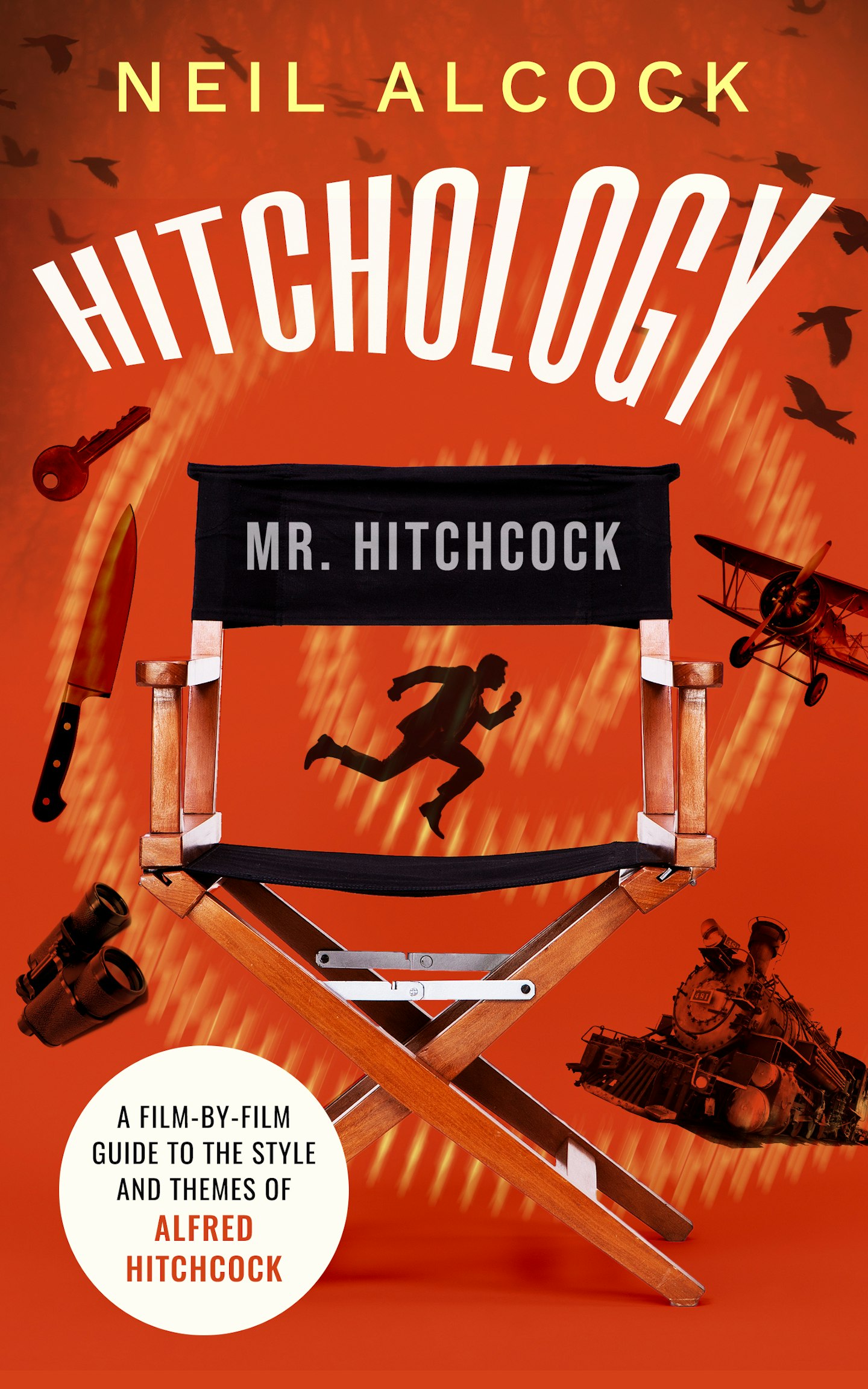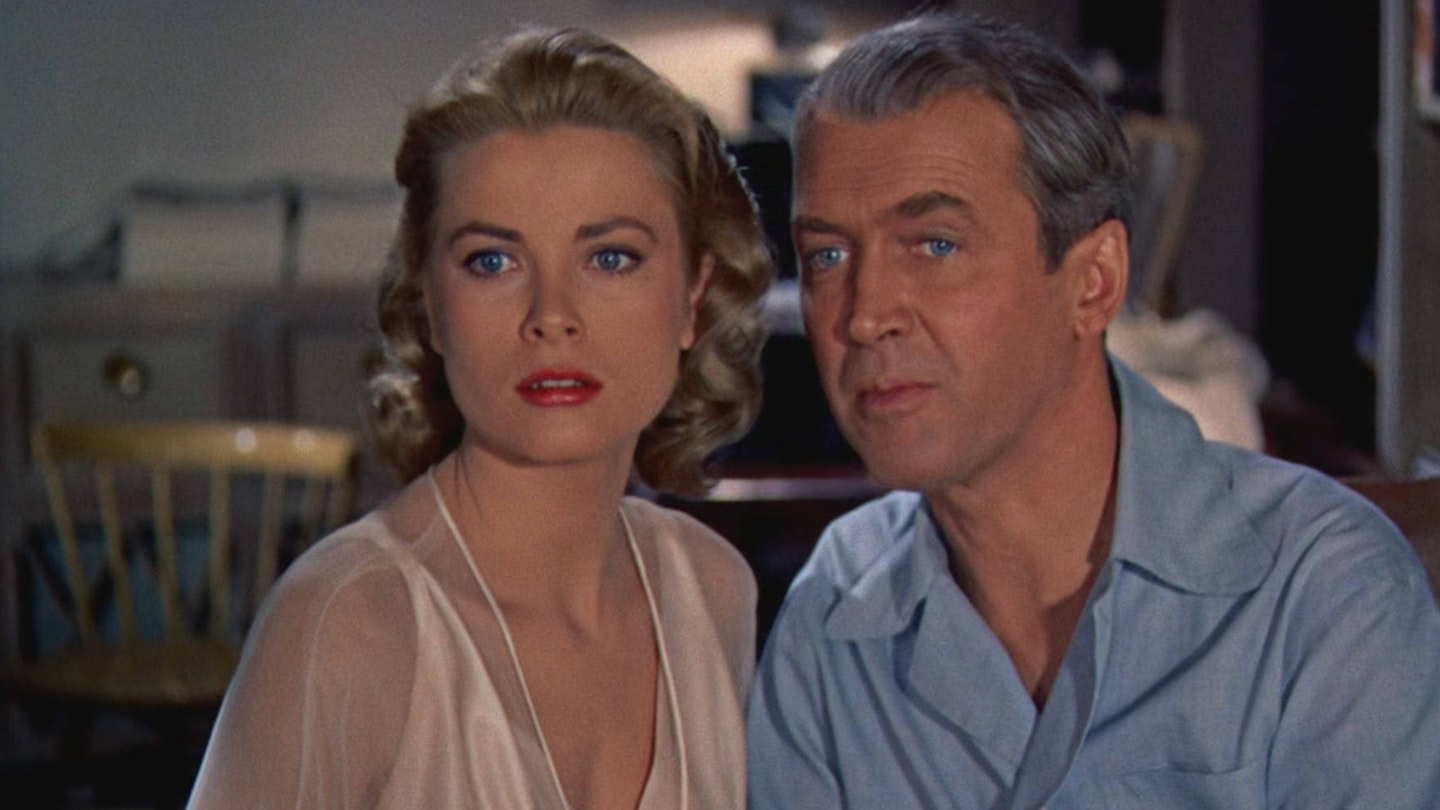Alfred Hitchcock was so prolific a director that very few years go by without a handful of his 53 feature films celebrating a significant anniversary. 2024 is no exception: his first version of The Man Who Knew Too Much turns 90 this year, Lifeboat drifts into its 80s, Dial M For Murder rings up 70 years, and Marnie – the baby of the bunch – is now a sprightly 60 years old.
Released just months after Dial M, Hitchcock’s sweatiest masterpiece Rear Window also celebrates 70 years of voyeuristic thrills this year. To celebrate, here’s an exclusive extract from regular Empire contributor Neil Alcock’s new book, Hitchology: A Film-by-Film Guide to the Style and Themes of Alfred Hitchcock. An accessible introduction for newcomers to Hitchcock and an insightful companion for devoted fans, Hitchology has been described by Empire’s editor Nick De Semlyen as “incisive, fresh and thunderingly entertaining.”

Have a read below, and look out for Hitchology at all good booksellers.
–––
In 1954 Hitchcock left Warner Brothers for Paramount, who granted him a freedom that led to a tipping point in his career. After nearly 30 years in which he’d directed almost 40 films and steadily built his own brand to the point of being as famous as his stars, Hitchcock finally had sufficient clout to do as he pleased. He gathered a trusted creative team who perfectly understood his vision, and picked his favourite actors without studio heads nixing his expensive choices. He was exactly where he wanted to be, and this long-desired contentment birthed a new filmmaking maturity. Almost everything Hitch made from this point on was characterised by a slick Hollywood sheen that belied multiple layers of psychological depth and seductively dark themes. Exhibit A: Rear Window – a glossy, charming, battle-of-the-sexes romcom featuring murder, suicide and a severed head in a flowerbed.
Set entirely in a New York apartment, presenting a huge technical challenge for Hitchcock and with a prominent role for James Stewart, Rear Window is arguably a jazzier, younger sibling to Rope. But whereas that film deliberately eschewed the benefits of editing, Rear Window takes the polar opposite approach. Stewart plays L.B. ‘Jeff’ Jefferies, a daredevil photographer stuck in a wheelchair with his leg in plaster after getting too close to the action on his last assignment. With no action to get close to while housebound, Jeff resorts to ogling his neighbours across the courtyard, eventually suspecting – as you do – that one of them may have bumped off his wife.

That’s Rear Window’s plot, but that’s not what Rear Window is about. The murder mystery is certainly suspenseful, gripping and quite gruesome in its details, but it’s merely a distraction from two big themes which had consumed Hitchcock since he first picked up a megaphone. With its prying protagonist and its subplot about Jeff’s rocky love life, Rear Window is the purest distillation of Hitchcock’s fascination with voyeurism, and of his belief in the insurmountable romantic incompatibility of men and women.
Hitch appeals to the voyeur in all of us when he places us in Jeff’s position with his subjective point-of-view shooting and cutting. He knows we’re all tempted to spy on our neighbours, and he knows we love to indulge in a little consequence-free voyeurism every time we go to a cinema to sit in the dark and watch people’s lives unfold in the most intimate ways, just as Jeff does in his apartment. When Jeff wonders if perhaps there hasn’t been a murder, we share his disappointment. What does that say about us? It’s precisely the kind of deliciously uncomfortable position Hitch loved to put his audience in.
Hitch somehow ends his film on a simultaneously triumphant and bleak note
A key element of Hitchcock’s voyeurism is his editing. A student of Russian montage, Hitch was well aware of the power of the ‘Kuleshov effect’ – the idea that any reaction shot of an actor is as dependent on the shot they’re reacting to as it is on the actor’s performance. Hitchcock’s films, and Rear Window in particular, are full of shots of characters looking, followed by a shot of what they’re looking at, followed by a reaction shot. Combine this with the subjectivity of giving the audience only Jeff’s point of view, and our experience of the film’s events is at the mercy of his reactions. Think about the infinite combination of shots and reaction shots that Hitchcock could have cut together, and you get some idea of the power of editing to shape narrative.
Meanwhile, Jeff is in the improbable situation of being annoyed that his girlfriend Lisa (an impossibly radiant Grace Kelly) wants to give herself to him entirely. He’s trying hard to convince himself she’s too good for him, while she’s trying to tie him down to a less dangerous career. If two people this perfect can’t get it on, suggests Hitchcock, what hope do the rest of us have? Jeff’s dissatisfaction is exacerbated by his voyeurism, and Lisa complains that the only way Jeff will pay her any attention is if she moves across the courtyard where he’s constantly looking. Little do either of them know she will eventually do just that, and that’s when Jeff will indeed finally take an interest in her.

As Jeff and Lisa bicker and banter away, possible versions of their relationship echo throughout the apartments across the courtyard. A newlywed couple’s marriage is threatened by the wife’s insatiable libido; a lonely woman sets a dinner table for an imaginary date just as Lisa arranges a meal for a man who’s barely present; a husband looks after and argues with his invalid wife, reversing the roles of Jeff and Lisa’s partnership. The lead couple seem to reach an understanding at the film’s climax, just as the other relationships in the block resolve. But a sly coda suggests otherwise, Hitch somehow ending his film on a simultaneously triumphant and bleak note.
Quite apart from these themes, there’s so much more going on in Rear Window that it remains one of Hitchcock’s most dissected films. Note, for instance, how events outside Jeff’s apartment seem to be intertwined with what happens inside: Jeff and his nurse discuss marriage, just before the newlyweds arrive. Jeff and Lisa have their biggest argument; moments later, Jeff hears a scream that signals the extreme culmination of another couple’s spat. A detective talks about poking into the case a little, shortly before we see a neighbourhood dog on the verge of uncovering vital evidence. Is Jeff somehow the cause of everything that happens? That chimes with another interpretation - that Jeff is Hitchcock’s surrogate, sitting in his chair, naming his characters and piecing together their stories from short scenes in rectangular frames – most of which are virtually silent, in a reminder of Hitch’s early career. It’s surely no coincidence that the film is bookended with the raising and lowering of blinds, like the curtains of a cinema screen.
Rear Window remains an undisputed masterpiece to this day, and it ignited an extraordinary phase in Hitchcock’s career. Critics and audiences alike were now his voyeurs, watching him night and day, desperate to see what he might do next. And while his on-screen relationships never ran smoothly, many filmgoers were now forming love affairs with Alfred Hitchcock that would last forever.
HITCHOLOGY is out now in paperback and eBook.
